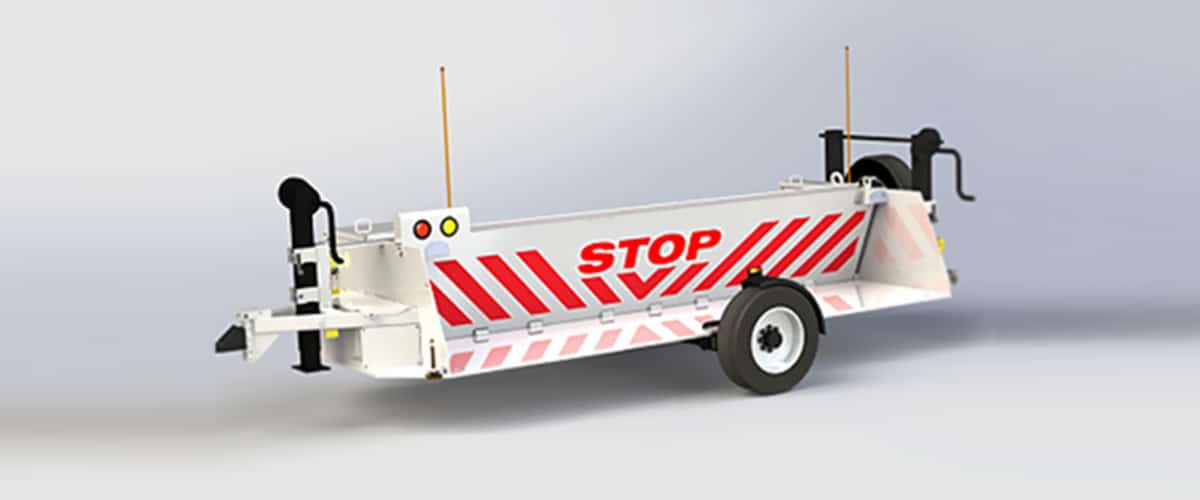Things about Wedge Barriers
Table of ContentsWedge Barriers - QuestionsWhat Does Wedge Barriers Do?

14 and the surface area 12 to which the obstacle 10 is protected may be made from concrete - Wedge Barriers. 2, the barrier 10 is installed to or includes an anchor or subframe (e. g., anchor 30 received FIG. 2 )secured underneath the surface area 12. For instance, the bather 10 may be bolted to the support or protected to the anchor by other mechanical bolts. In the illustrated embodiment, the obstacle 10 consists of a wedge plate 16, which includes a portion that is considerably identical with the surface 12 when the obstacle 10 is in the pulled back setting. Simply put, vehicles or people may overlook the barrier 10 when the obstacle 10 is in the withdrawed position and experience mild elevation about the surface area 12 while on the obstacle 10. As gone over in information below, when the obstacle 10 remains in the deployed setting, the wedge plate 16 is held and supported in an elevated setting by a lifting system of the barrier 10. In addition, the parts 18 might be bolted or otherwise mechanically paired to each other. In this manner, fixing or substitute of one or even more parts 18 might be streamlined and structured. That is, repair or replacement of solitary parts
18 may be done faster, quickly, and expense effectively. FIG. In particular personifications, the anchor 30 may be a steel framework including plates, light beams(e. g., I-beams ), and/or various other frameworks that are safeguarded within the foundation 14, which might be concrete. At the surface area 12, an upper side 28 of the support his explanation 30 may go to the very least partly revealed
, therefore making it possible for the add-on of the barrier 10 to the support 30. g., threaded openings)in one or more beam of lights or plates of the support 30 might be exposed to the surface 12. In this manner, screws 32 or other mechanical bolts may be made use of to protect the obstacle 10 to the support 30. As the obstacle 10 is mounted to the surface area 12 of the structure 14, collection of particles and various other material underneath the obstacle might be reduced, and parts of the bather 10 might not be revealed to listed below grade atmospheres. As suggested by reference character 52, the lifting system 50 includes components got rid of under the wedge plate 16. The components 52 underneath the wedge plate 16 might include an electromechanical actuator, a webcam, one or more cam surfaces, and so forth. Additionally, the lifting system 50 includes a springtime setting up 54
The spring rod 58 is combined to a cam(e. g., camera 80 revealed in FIG. 4) of the training system 50. The springs 60 disposed concerning the spring pole 58 are held in compression by spring sustains 62, consisting of a repaired spring support 64. Get More Information That is, the fixed springtime support 64 is fixed relative to the structure 14 et cetera of the bather 10.
Get This Report on Wedge Barriers
g., springtime assistance 65 )might be repaired to the end of the spring rod 58 to enable compression of the springs 60. As the springs 60 are pressed between the spring sustains 62, the spring setting up 54 produces a force acting on the web cam coupled to the springtime rod 58 in anonymous an instructions 66. The continuing to be pressure applied to
the cam camera deploy release wedge plate 16 may might provided offered an electromechanical actuator 84 or other actuator. As such, the springtime setting up 54 and the actuator 84(e. g., electromechanical actuator)may run together to convert the camera and raise the wedge plate 16.
As discussed over, in the deployed placement, the wedge plate 16 offers to obstruct access or travel past the obstacle 10. The barrier 10(e. g., the wedge plate 16 )may obstruct pedestrians or lorries from accessing a residential or commercial property or pathway. If a car is taking a trip in the direction of the released wedge plate 16(e. For instance, in one condition, the security legs 86 might be prolonged duringmaintenance of the barrier 10.